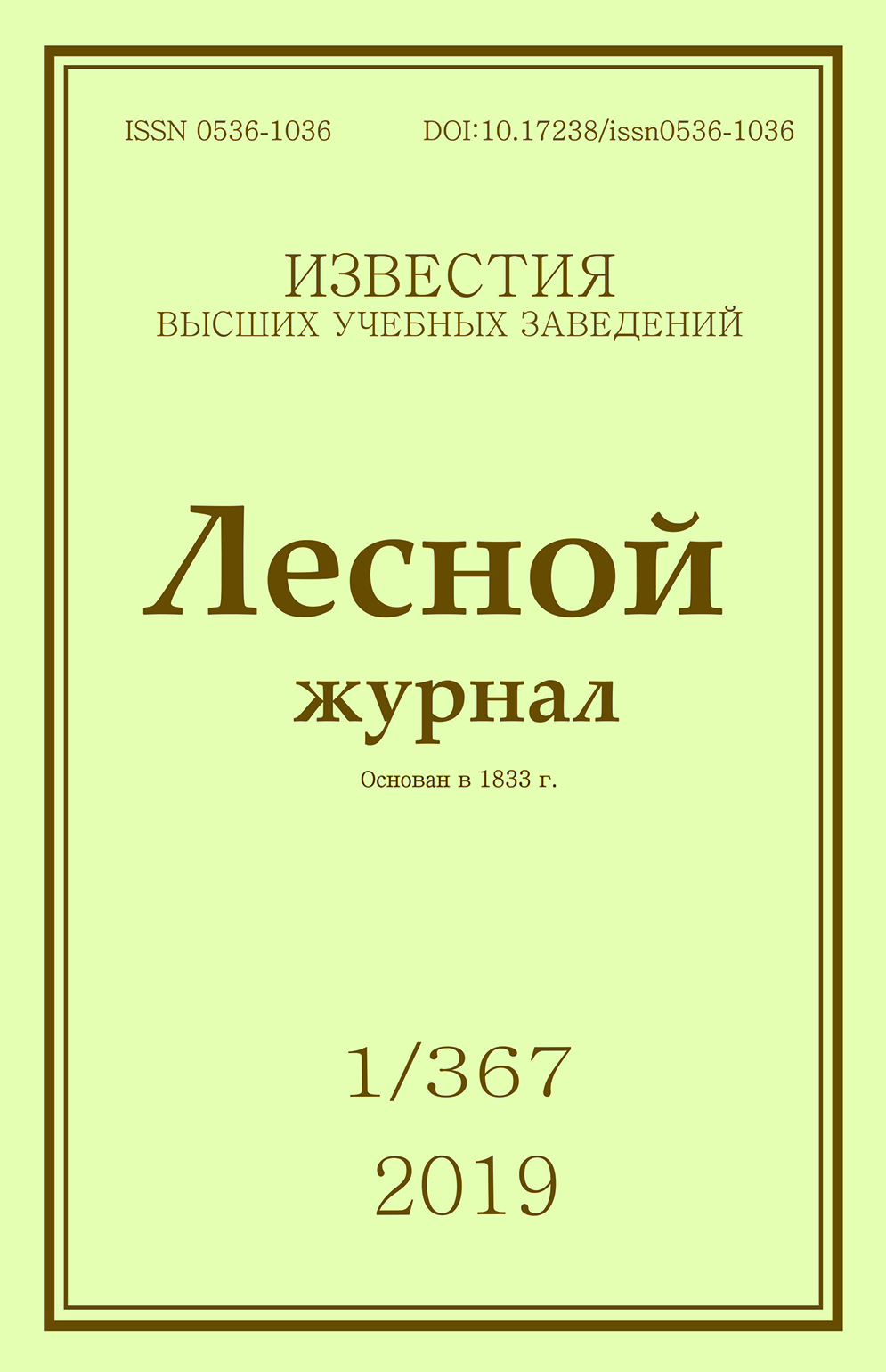The Efficiency of Coagulants in Water Treatment in the Pulp and Paper Industry in the North
Keywords:
suspended solids, pH, chromaticity, clarifying of natural water, coagulation, polyaluminum chlorideAbstract
Water treatment processes at a pulp and paper mill were studied. Weaknesses of the water purification scheme on the wastewater filter treatment facilities of the pulp and paper mill of Arkhangelsk region are revealed: influence of water quality seasonal fluctuations on the purification efficiency, content of residual aluminum, and chemical oxygen demand (COD) in the treated water. In order to improve the water treatment quality, it was offered to replace the used reagent with one of the modern coagulants. The experiment was made under the laboratory conditions by the procedure of trial coagulation of the Northern Dvina river water at a temperature about 15–20 °C. Sampling, definition of initial parameters of water quality, and control of residual iron and aluminum, chromaticity, рН, COD were carried out by the standard methods. The initial river water had high chromaticity, low turbidity, low alkalinity, and high content of organic natural compounds. Reagent application conditions and the influence of a reagent dosage on рН were studied. The usage efficiency of reagents based on polyaluminum chloride (PAX XL100, UltraPAC-V1, UltraPAC-V2, PAC), aluminum sulfate and ferric salt – Ferix-3 is defined. Comparative analysis of coagulant efficiency was made between the coagulants and with aluminum sulfate (AS) applied according to the standard scheme. Ferix-3 coagulant usage in suboptimal conditions (low рН values, insufficient or excess dosage of reagent) leads to increase in chromaticity of the treated water by several times in comparison with the initial parameters. AS usage leads to the significant decrease of water pH because of its low alkaline water supply, at the same time the coagulation efficiency decreases. It is important to increase alkaline reagent dosage in response to this problem. Experimental data confirms high efficiency of treatment with polyaluminum chloride (PAC) in comparison with other reagents. The relevance of replacement AS by PAC in water purification with high chromaticity, low turbidity and alkalinity, and high content of natural organic compounds is approved.
Downloads
References
Апельцина Е.И., Беляева С.Д., Короткова Е.В. Исследование влияния свойств анионных флокулянтов на эффективность коагуляционной очистки природных цветных вод // Изв. Жилищ.-коммун. акад. гор. хоз-ва и экологии. 1999. № 3. С. 64–68.
Бабенков Е.Д. Очистка воды коагулянтами. М.: Наука, 1977. 356 с.
Гандурина Л.В. Органические флокулянты в технологии очистки природных и промышленных сточных вод и обработки осадка: аналит. обзор / ФГУП ВОДГЕО. М., 2002. 41 с.
Гетманцев С.В., Нечаев И.А., Гандурина Л.В. Очистка производственных сточных вод коагулянтами и флокулянтами. М.: АСВ, 2008. 272 с.
ГН 2.1.5.1315–03. Предельно допустимые концентрации (ПДК) химических веществ в воде водных объектов хозяйственно-питьевого и культурно-бытового водопользования. Гигиенические нормативы. М., 2003. 154 с.
Гончарук В.В., Герасименко Н.Г. Электрокинетические свойства продуктов гидролиза основных сульфатов железа в условиях процесса водоподготовки // Химия и технология воды. 1996. Т. 18, № 3. С. 227–232.
Зубакова Л.Б., Тевлина А.С., Даванков А.Б. Синтетические ионообменные материалы. М.: Химия, 1978. 184 с.
Комиссаренков А.А., Пругло Г.Ф., Федоров В.А., Федорова О.В. Основы водоподготовки в целлюлозно-бумажной промышленности и теплоэнергетике: учеб.- метод. пособие. СПб.: СПбГТУРП, 2012. 98 с.
Коряйкина А.В., Аюкаев Р.И. Применение биотехнологий для очистки высокоцветных природных вод из поверхностных источников в условиях Севера // Изв. Казан. гос. архитектурно-строит. ун-та, 2010. № 1(13). С. 245–251.
Лотош В.Е. Экология природопользования: учеб. пособие. Екатеринбург: Изд-во УрГУПС, 2002. 540 с.
СанПиН 2.1.5.980–00. Гигиенические требования к охране поверхностных вод. М.: Минздрав России, 2000. 18 с.
СанПиН 2.1.4.1074–01. Питьевая вода. Гигиенические требования к качеству воды централизованных систем питьевого водоснабжения. Контроль качества. Гигиенические требования к обеспечению безопасности систем горячего водоснабжения. М.: Информ.-изд. центр Минздрава России, 2002.
Ebeling J.M., Sibrell P.L., Ogden S.R., Summerfelt S.T. Evaluation of Chemical Coagulation–Flocculation Aids for the Removal of Suspended Solids and Phosphorus from Intensive Recirculating Aquaculture Effluent Discharge // Aquacultural Engineering. 2003. Vol. 29, iss. 1-2. Pp. 23–42. DOI: 10.1016/S0144-8609(03)00029-3
Folkard G.K., Sutherland J.P., Shaw R. Water Clarification Using Moringa Oleifera Seed Coagulant. London: Intermediate Technology Publications, 1999. Pp. 109–112.
Letterman R.D., Driscoll Ch.T. Survey of Residual Aluminum in Filtered Water // Journal AWWA. 1988. Vol. 80, iss. 4. Pp. 154–158. DOI: 10.1002/j.1551-8833.1988.tb03020.x
Letterman R.D., Pero R.W. Contaminants in Polyelectrolytes Used in Water Treatment // Journal AWWA. 1990. Vol. 82, iss. 11. Pp. 87–97. DOI: 10.1002/j.1551-8833.1990.tb07056.x
Muyibi S.A., Evison L.M. Coagulation of Turbid Water and Softening of HardWater with Moringa Oleifera Seeds // International Journal of Environmental Studies. 1996. Vol. 49, iss. 3. Pp. 247–259. DOI: 10.1080/00207239608711028
Narkis N., Rebhum M. Flocculation in Present of Organic Macromolecules of Natural Water and Secondary Effluents // Water Science and Technology. 1997. Vol. 36, iss. 4. Pp. 85–91. DOI: 10.1016/S0273-1223(97)00423-X
Park H., Lim S., Lee H., Woo D.-S. Water Blending Effects on CoagulationFlocculation Using Aluminum Sulfate (alum), Polyaluminum Chloride (PAC), and Ferric Chloride (FeCl3) Using Multiple Water Sources // Desalination and Water Treatment. 2016. Vol. 57, iss. 16. Pp. 7511–7521. DOI: 10.1080/19443994.2015.1025583
Roussy J., Van Vooren M., Dempsey B.A, Guibal E. Influence of Chitosan Characteristics on the Coagulation and the Flocculation of Bentonite Suspensions // Water Research. 2005. Vol. 39, iss. 14. Pp. 3247–3258. DOI: 10.1016/j.watres.2005.05.039
Wei N., Zhang Z., Liu D., Wu Y., Wang J., Wang Q. Coagulation Behavior of Polyaluminum Chloride: Effects of pH and Coagulant Dosage // Chinese Journal of Chemical Engineering. 2015. Vol. 23, iss. 6. Pp. 1041–1046. DOI: 10.1016/j.cjche.2015.02.003
Zhang Z., Wang J., Liu D., Li J., Wang X., Song B., Yue B., Zhao K., Song Y. Hydrolysis of Polyaluminum Chloride Prior to Coagulation: Effects on Coagulation Behavior and Implications for Improving Coagulation Performance // Journal of Environmental Sciences (China). 2017. Vol. 57. Pp. 162–169. DOI: 10.1016/j.jes.2016.10.014
Zhao Y.X., Phuntsho S., Gao B.Y., Yang Y.Z., Kim J.H., Shon H.K. Comparison of a Novel Polytitanium Chloride Coagulant with Polyaluminium Chloride: Coagulation Performance and Floc Characteristics // Journal of Environmental Management. 2015. Vol. 147. Pp. 194–202. DOI: 10.1016/j.jenvman.2014.09.023







